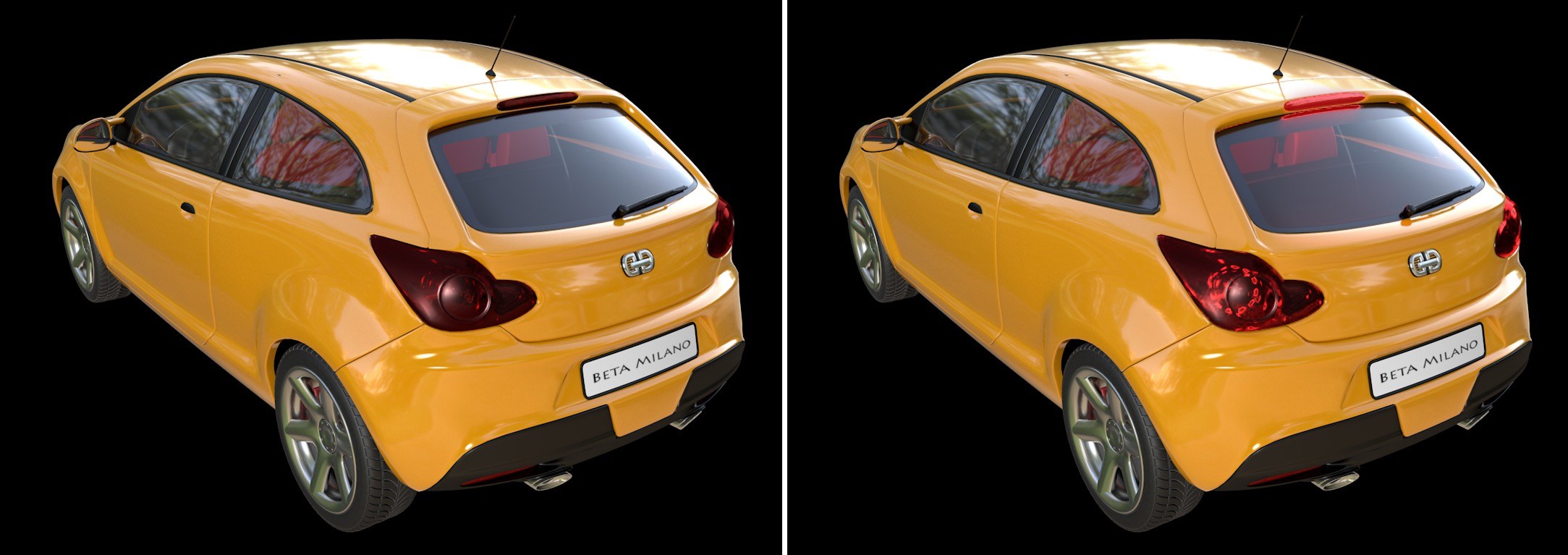Emission
 The Emission setting can be used to add self-luminance properties to a material that can affect neighboring surfaces like a normal light. In this example, the brake lights were made to light up using the Emission setting (see right side).
The Emission setting can be used to add self-luminance properties to a material that can affect neighboring surfaces like a normal light. In this example, the brake lights were made to light up using the Emission setting (see right side).This material layer weakens all shading properties of the material or negates their effect in part. Included are the channels Diffuse, Reflection, Relief and Normal. This can only be prevented by reducing the Intensity setting or by applying darker colors for Emission. The Emission effect is designed to let a material luminate or appear translucent.
This setting can be used to define the color with which the surface should luminate. If a pattern or texture should be used instead of a homogenous color value, use the connector icon. Brighter colors will lead to a correspondingly intense surface luminance and will reduce all properties that are created by the shading that is generated.
This setting can be used to affect the intensity of the luminance or the brightness of the Color used. For example, if an inverted Ambient Occlusion Node is linked with an activated Invert Direction option, the luminance effect can be restricted to an object’s sharp edges, which can be used to simulate Subsurface Scattering in come cases.